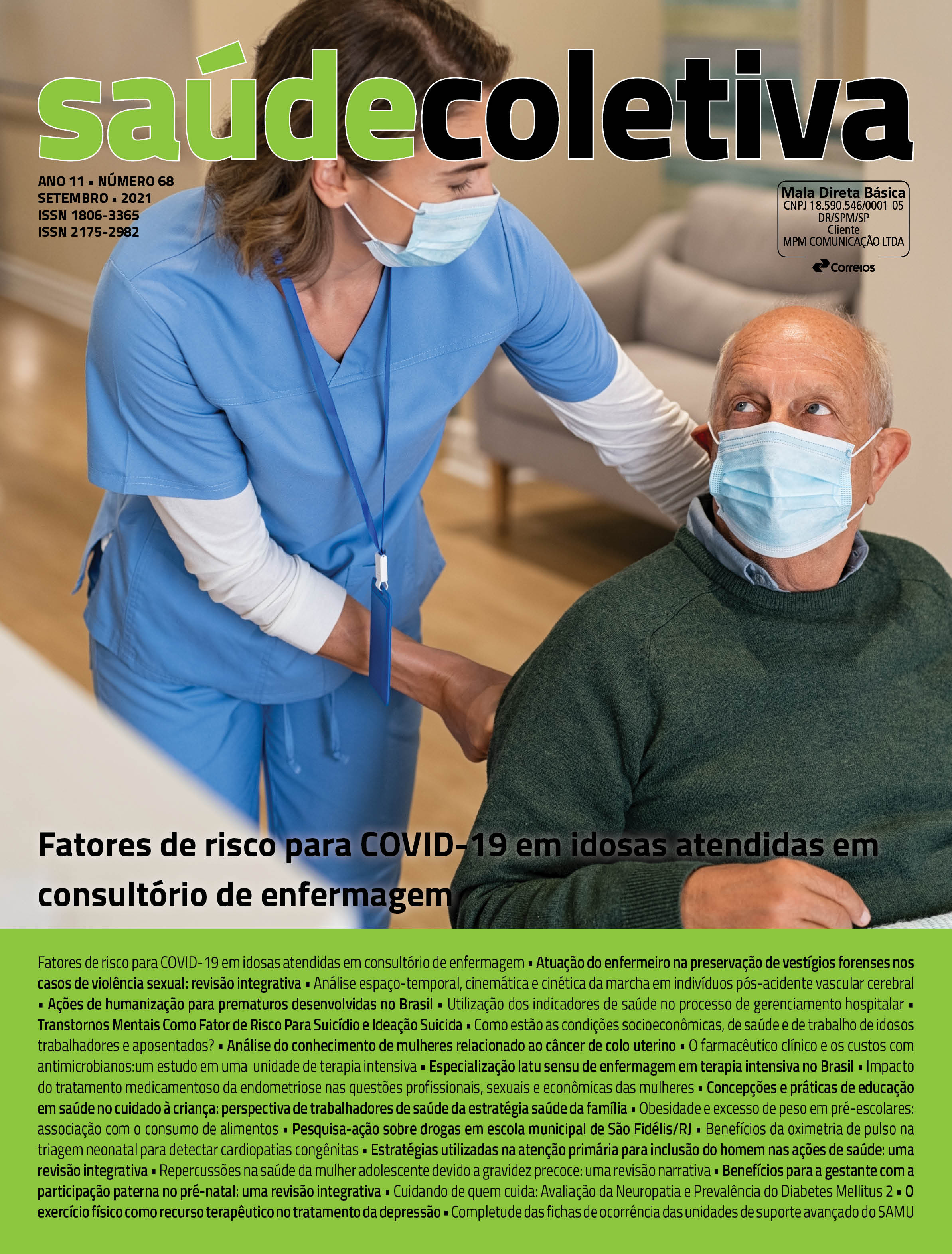Muscle strength, laboratory profile and quality of life in active and sedentary women with breast cancer
DOI:
https://doi.org/10.36489/saudecoletiva.2021v11i68p7533-7544Keywords:
Breast Neoplasms, Motor Activity, Muscle Strength, Laboratory Research, Indicators of Quality of LifeAbstract
Combined resistance and aerobic training are part of non-pharmacological treatment for cancer patients. Objective: Analise muscle strength, laboratory profile and quality of life of active and sedentary women with breast cancer. Method: A sample of 43 women with breast cancer attended by “Associação dos Amigos da Oncologia – AMO” at state of Sergipe, Brazil, followed for 6 weeks; by that amount, 27 accomplished combined training (experimental group – GE) , and 16 were sedentary (control group – GC). Results: All studied variables had bigger average at GE. Mann-Whitney test showed significant differences in muscle strength between both groups: upper limbs (Δ%=45,30 %; p=0,162); lower limbs (Δ%=50,95 %; p=0,536); and trunk (Δ%=42,00%; p=0,704). At laboratory profile, there was a bigger difference in leukocytes. Lastly, the analysis of quality of life showed improvement at GE (Δ=57,34%, p>0,001). Conclusion: The physical activity triggers improvement in: strength muscle, laboratory profile (causing betterment of anemia and immune response) and also in quality of life.







